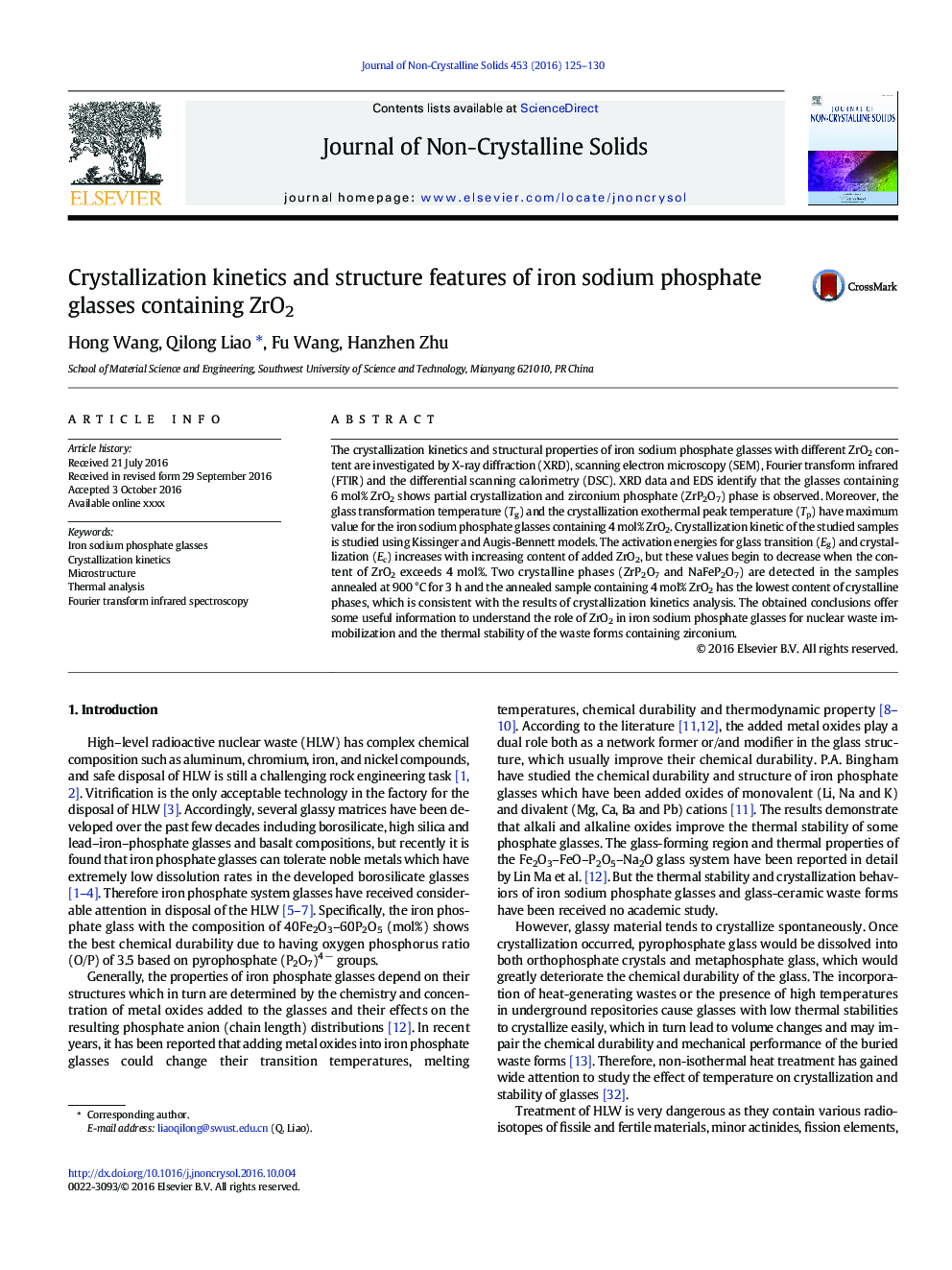| Article ID | Journal | Published Year | Pages | File Type |
|---|---|---|---|---|
| 5441560 | Journal of Non-Crystalline Solids | 2016 | 6 Pages |
Abstract
The crystallization kinetics and structural properties of iron sodium phosphate glasses with different ZrO2 content are investigated by X-ray diffraction (XRD), scanning electron microscopy (SEM), Fourier transform infrared (FTIR) and the differential scanning calorimetry (DSC). XRD data and EDS identify that the glasses containing 6 mol% ZrO2 shows partial crystallization and zirconium phosphate (ZrP2O7) phase is observed. Moreover, the glass transformation temperature (Tg) and the crystallization exothermal peak temperature (Tp) have maximum value for the iron sodium phosphate glasses containing 4 mol% ZrO2. Crystallization kinetic of the studied samples is studied using Kissinger and Augis-Bennett models. The activation energies for glass transition (Eg) and crystallization (Ec) increases with increasing content of added ZrO2, but these values begin to decrease when the content of ZrO2 exceeds 4 mol%. Two crystalline phases (ZrP2O7 and NaFeP2O7) are detected in the samples annealed at 900 °C for 3 h and the annealed sample containing 4 mol% ZrO2 has the lowest content of crystalline phases, which is consistent with the results of crystallization kinetics analysis. The obtained conclusions offer some useful information to understand the role of ZrO2 in iron sodium phosphate glasses for nuclear waste immobilization and the thermal stability of the waste forms containing zirconium.
Keywords
Related Topics
Physical Sciences and Engineering
Materials Science
Ceramics and Composites
Authors
Hong Wang, Qilong Liao, Fu Wang, Hanzhen Zhu,
